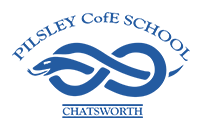Phonics
At Pilsley C of E Primary School phonics is taught through the popular Read, Write Inc. phonics scheme. Read Write Inc. (RWI) is a phonics-based literacy program developed by Ruth Miskin to teach children to read and write. Letter sounds are introduced in a systematic way and the children quickly learn to blend these sounds to read words, or segment sounds to write words. The program provides a structured and sequential method for teaching literacy, ensuring that children learn in a clear and consistent way. This scheme has been approved by the Department for Education and follows current best practice on the teaching of phonics and reading and educational research about the way that children learn best.
Reading is the gateway to learning. When children read frequently, they become confident readers. Confident readers can tackle more complex texts, which deepens their understanding and broadens their knowledge. As children learn more, their curiosity grows, driving them to explore even further.
Through Read Write Inc. (RWI), with the right support, children learn to read with ease, allowing them to focus their energy on understanding what they read. Similarly, RWI helps them spell effortlessly, freeing their minds to concentrate on expressing their ideas clearly in writing.
At Pilsley we begin to introduce the children to the set one sounds in the final term of Nursery. Once children begin their Reception Year with us they will begin the Read, Write Inc. programme for Reception children.
When using RWI to read the children will:
- learn that sounds are represented by written letters
- learn 44 sounds and the corresponding letter/letter groups using simple picture prompts
- learn how to blend sounds
- learn to read words using 'Fred Talk'
- read lively stories featuring words they have learnt to sound out
- show that they comprehend the stories by answering questions.
When using RWI to write the children will:
- learn to write the letters/letter groups which represent 44 sounds.
- learn to write words by saying the sounds in Fred Talk
- write simple sentences
A Phonics Audio Guide
There are 26 letters of the alphabet but they make 44 sounds. Use this audio guide to hear all 44 sounds, on their own and in example words.
For more information about the Read Write Inc. Phonics programme and ways you can support children in their phonics journey please visit the link below:
Read, Write Inc. Phonics Guidance for Parents
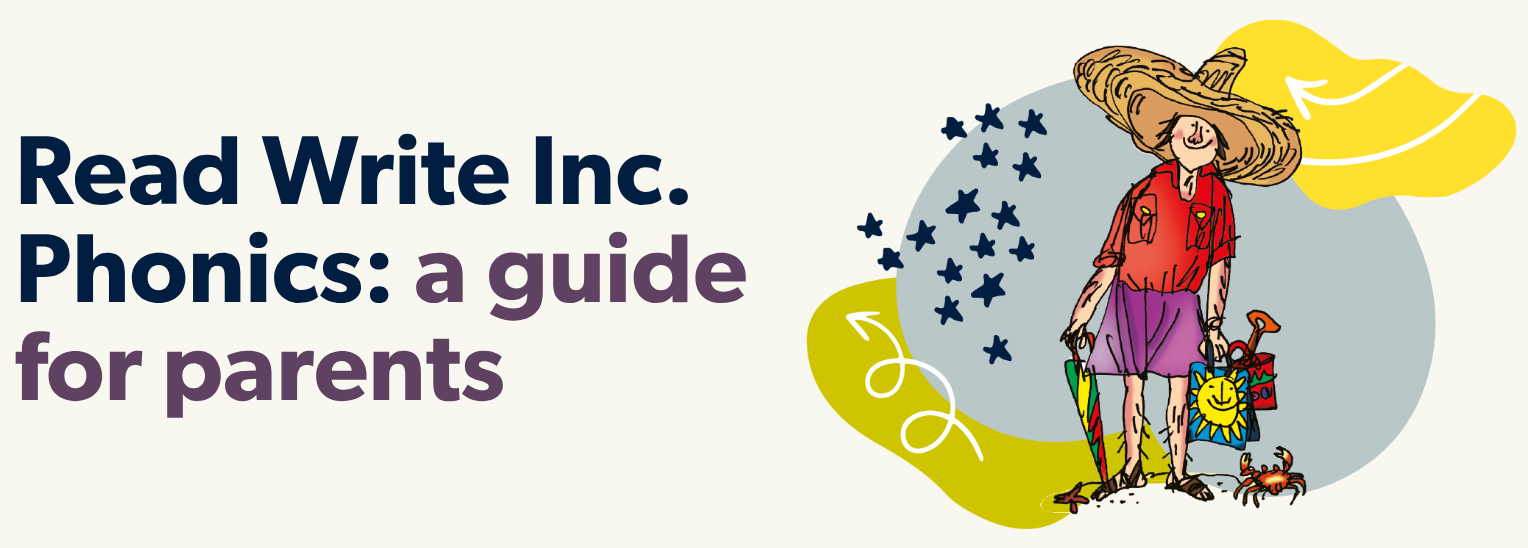
Assessment for Learning
We will regularly assess your child's development in phonics to make sure they are making good progress and make adjustments to their learning as necessary. As the children progress through the scheme and learn new sound and letter combinations, they will be able to read and understand more complex texts. The children will be given materials to bring home such as sound books, letter formation activities and reading books to help support each level of their phonics learning at school.
Read Write Inc sounds
Set 1 sounds
In Nursery and Reception, the children learn to read the Set 1 sounds by sight. They also learn how to blend them together to read words e.g. c-a-t = cat. When they are ready, they will then move onto learning to Set 2 and Set 3 sounds. The children consolidate their learning at each stage before moving on to learning more sounds.
Before children can start to read, they need to learn to:
- Say the sound that is represented by each letter or groups of letters. These are called ‘speed sounds’.
- Know how to blend the sounds together in a word to read it e.g. c-a-t = cat. This is called ‘sound- blending’.
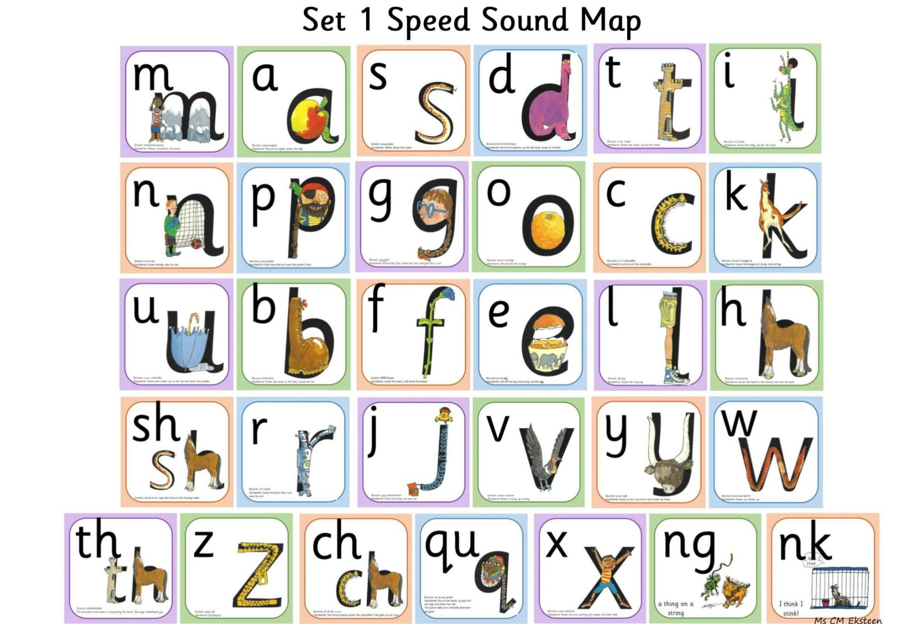
Set 2 sounds
Once your child knows all Set 1 sounds by sight uses them to blend to read words, we start teaching Set 2 initially and then Set 3 long vowel sounds.
We now start to learn that two or three letters together can make one sound. We call them ‘special friends’.
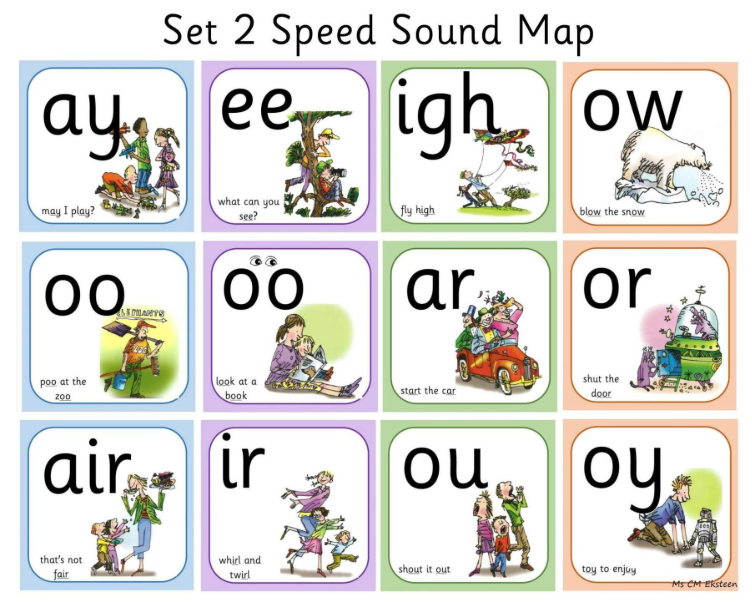
Set 3 sounds:
After learning the Set 2 sounds, the children will have learnt one way in which each long vowel sound is written. When learning their Set 3 speed sounds, they will be taught that there are more ways in which the same sounds are written, e.g. ee as in tree, and ea as in tea.
When the children learn their Set 3 sounds in school they will learn:
• The letters that represent a speed sound e.g. 'ea’
• A simple picture prompt linked to the ‘speed sound’ and a short phrase to say e.g. ‘cup of tea’
There are 20 Set 3 speed sounds that are made up of two or three letters which represent just one sound, e.g. ea as in tea, ow as in cow, and are as in care. It is important that these are not pronounced as 2 or 3 separate sounds.
When a sound contains two letters that makes just one sound e.g. ‘ea’, it is known as a ‘digraph’. When a sound contains three letters that make just one sound e.g. ‘ure', it a ‘trigraph’. When a sound has two letters, which work as a pair to make one sound, but are separated with the word e.g. ‘a-e’ (cake), it a referred to as a ‘split digraph’. The children will learn some of these words as they are introduced to the sounds.
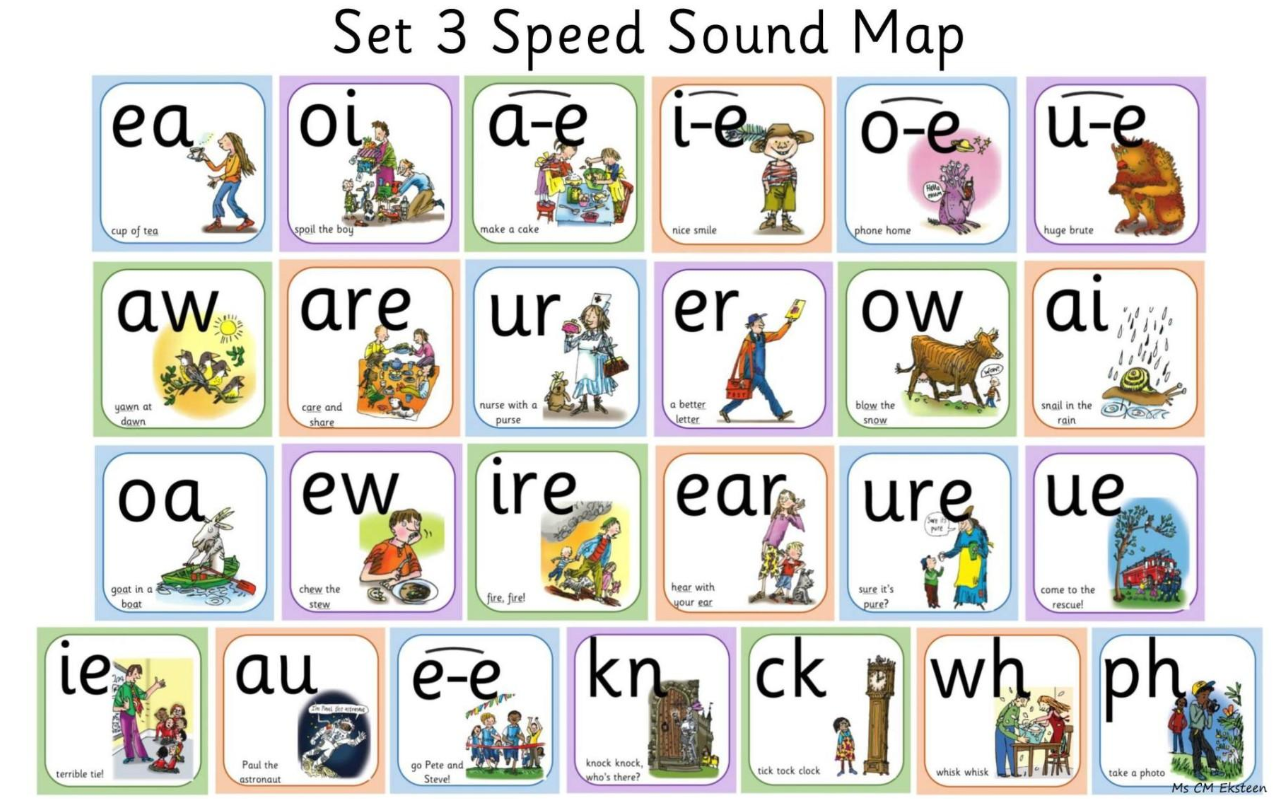
Sound Families
Some letter combinations make the same sound as each other.
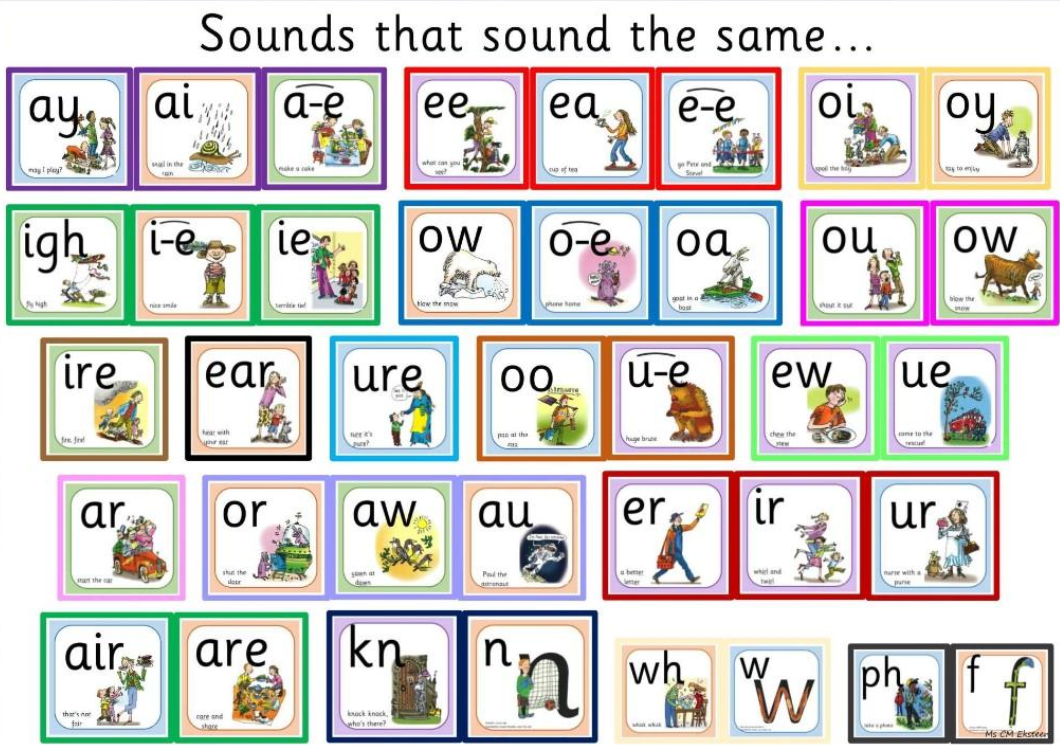
Alongside learning the letter- sound combinations, the children also learn to read red words (trickier words that cannot be decoded using phonics). This enables them to read these words in the texts they encounter. Children need lots of exposure to red words to recognise them by sight. We send home red words for the children to learn alongside their reading books. The list below shows the words with the trickier part circled. When we teach the red words, we draw attention to the letters that are being tricky, and not making their usual sounds.
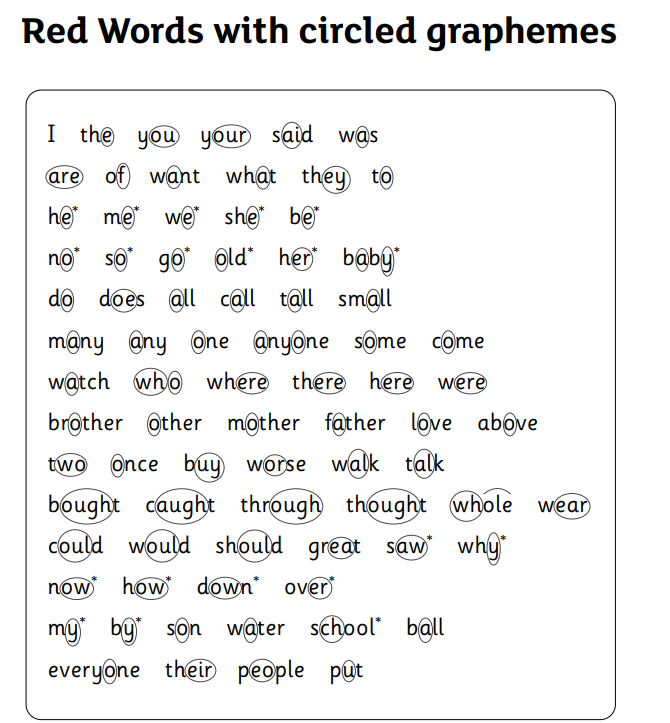
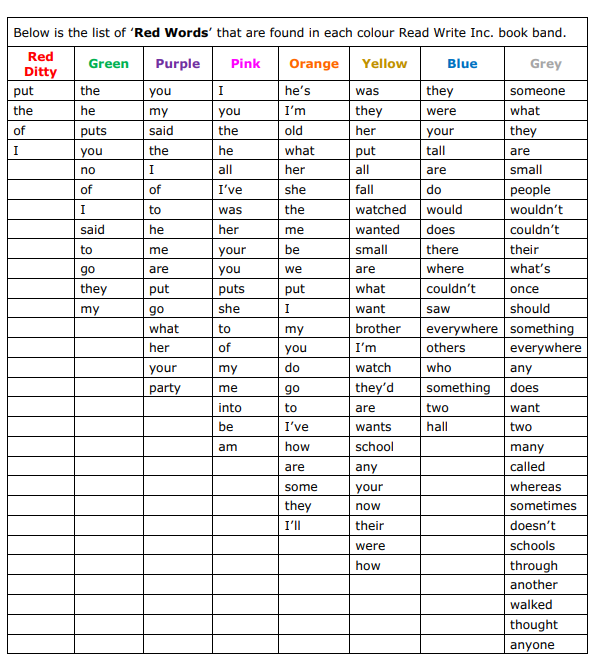
Year One Common Exception Words
Year 1 common exception words are high-frequency words that don't follow typical phonetic rules and need to be learned by sight. These words taken from the National Curriculum recommended words that are important for year one learners to recognise and spell accurately, as they are frequently used in reading and writing.
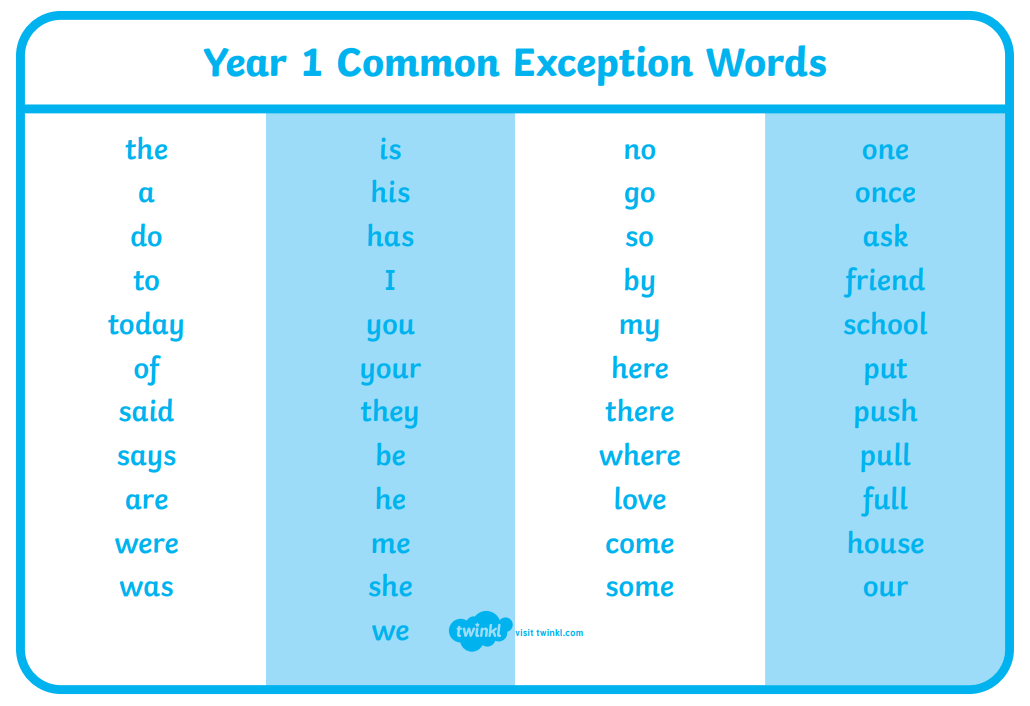
Year Two Common exception words:
Year 1 common exception words are high-frequency words that don't follow typical phonetic rules and need to be learned by sight. These words taken from the National Curriculum recommended words that are important for year two learners to recognise and spell accurately, as they are frequently used in reading and writing.
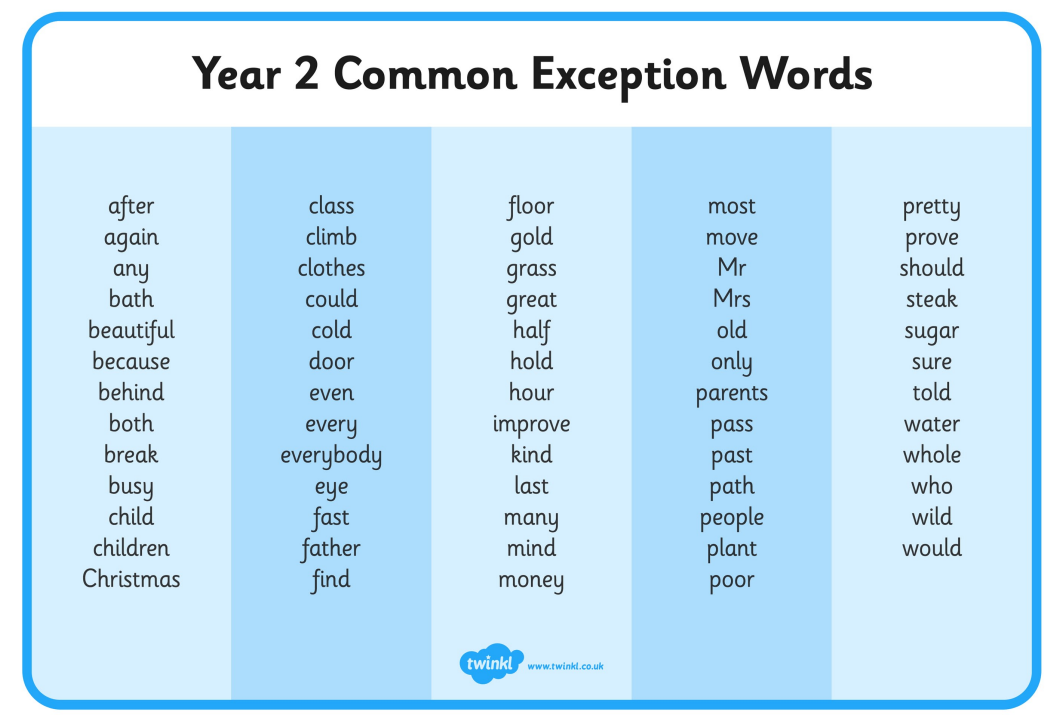
Year 1 Phonics Screening Check
In the summer term of Year One children are given a phonics check to give us a snapshot of their phonics progress.
The Year 1 phonics screening check is not a formal test, but a way for teachers to ensure that children are making sufficient progress with their phonics skills to read words and that they are on track to become fluent readers who can enjoy reading for pleasure and for learning.
1. What is the Year 1 phonics screening check?
The phonics screening check is taken individually by all children in Year 1 in England, and is usually taken in June. It is designed to give teachers and parents information on how your child is progressing in phonics. It will help to identify whether your child needs additional support at this stage so that they do not fall behind in this vital early reading skill.
2. What is in the phonics screening check?
There are two sections in this 40-word check and it assesses phonics skills and knowledge learnt through Reception and Year 1. Your child will read up to four words per page for their teacher and they will probably do the check in one sitting of about 5–10 minutes.
There will be a few practice words first to make sure your child understands the activity.
3. How will my child be scored? Is there a pass mark?
The check is not about passing or failing but checking appropriate progress is being made. Children progress at different speeds so not reaching the threshold score does not necessarily mean there is a serious problem. Your child will re-sit the check the following summer term.
For the last few years, the threshold mark (or pass standard) set by the government has been 32 correct answers out of 40.
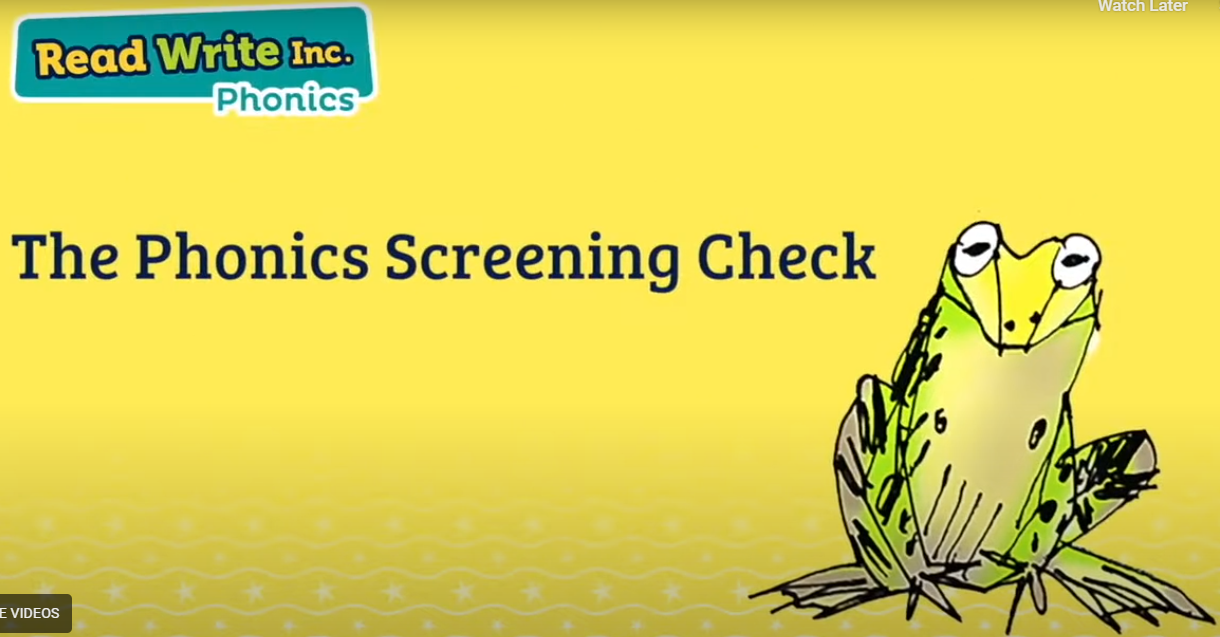
Daily handwriting
Children learn the correct letter formation as part of their daily Speed Sounds Lesson. We use the mnemonics from Read, Write Inc. to help children visualise the letter before they write it down. In the ‘Write the letters’ activity in the lesson, children practise saying the handwriting phrase and the sound as they form the letter in the air and then write the sound on paper. Please see the letter formation chart below if you would like to know more about how we teach children the way to form their letters.
